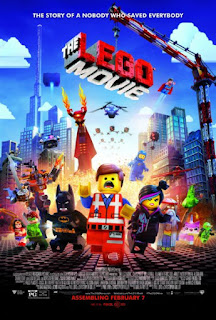Film Review: Alfred Hitchcock's "Psycho" (1960)
Figure 1. Psycho Movie Poster
Alfred Hitchcock’s “Psycho” (1960) would possibly have to be the mother of all suspenses and plot twists. To have the ability to grab an audience like that and have them cry “I didn’t see that coming!” is a sign of a successful movie. With a riveting title sequence created by Saul Bass, it’s not a film anyone will be forgetting anytime soon.
There are many aspects of this film that make “Psycho” as infamous as it is, but the most well known scene is the shower scene shown about a third of the way through the film. Joseph Stefano mentions, “There's hardly a film fan alive who doesn't know what happens next, but while the shower scene is justifiably the film's most famous sequence, there are dozens of memorable bits throughout this film.” (Stefano, J. 2010) It was Hitchcock’s decision to take such a creative risk, but it worked. This dramatic sequence threw the audience off completely, causing it to become so memorable and have a lasting shocking impression, due to it’s scandalous appearance and taboo like nature. Thus, creating what has to be one of the most thrilling movie scenes of it’s time.
Figure 2. Marion on the run
As Mark Monhan so eloquently put, “Hitchcock's mischievous genius for audience manipulation is everywhere: in the noirish angularity of the cinematography, in his use of Bernard Herrmann's stabbing string score, in the ornithological imagery that creates a bizarre sense of preying and being preyed upon.” (Monhan, M. 2014) Indeed, it is true that Hitchcock is rather well known for capturing the audience, but to also have to ability to torture them with film is the sign of either a genius, or a man having the advantage by exploiting his talent. Nevertheless, what’s remarkable is his capability to conjure up these extraordinary camera angles that perhaps leave some of us breathless. A favoured example would be when Detective Arbogast is brutally murdered at the top of the stairs within Norman Bates’ home. We pan to a bird’s eye view as soon as he reaches the top of the stairs, and without fair warning, a figure rushes out from one of the rooms on the first floor and drives a knife through the detective several times, before allowing him to plunge to his death. Ultimately, it disturbs us and horrifies us, yes because of the surprising action that we just witnessed, but furthermore, we are mortified due to the fact that we are so close to seeing who the killer is, but we couldn’t be more further from it due to the camera angle. The power that Hitchcock holds with the use of a camera is incredible.
So it was put by Bill Weber in his review, “Given Hitchcock's much-quoted cheeky remark that "actors should be treated like cattle," it's perhaps fitting that the under appreciated fulcrum of Psycho—which lays the groundwork for transferring the audience's empathy from Marion to Norman—is the beautifully played and paced scene in the parlour behind the motel's office…” (Weber, B. 2010) Taking note of the phrase, ‘actors should be treated like cattle’, it then draws us towards facts of how the actors had been treated during filming. It has been known that Janet Leigh, who so fittingly played our leading lady Marion, had to film the infamous shower scene, although lasting just three minutes in film, was actually shot at 77 different angles and took 50 cuts to create a memorable performance. Knowing this, one can’t help but wonder about if this was as similar as to how Stanley Kubrick had treated his actors within his film “The Shining” (1980). It may be possible that the fact that Hitchcock was so severe to his actors that then lead to creating such an unsettling atmosphere within the movie itself.
Figure 3. Anthony Perkins as Norman Bates
Method of acting aside, it is clear that “Psycho” has turned into a timeless classic that portrays the beginning of a new era of horror in terms of genre, the ‘slasher’. Despite most horror films within our time being so explicit that we have become desensitised, this film allows us to look back on what truly defined suspense and tension, for fear of the unknown.
Bibliography:
Monhan, M. (2014) ‘Psycho, review’ (12.08.14) In: http://www.telegraph.co.uk/ (2014) [Online] At: http://www.telegraph.co.uk/culture/film/filmreviews/11025424/Psycho-review.html (Accessed on 01.02.15)
Stefano, J. (2010) ‘Psycho (1960)’ (02.04.10) In: http://www.rottentomatoes.com/ (2010) [Online] At: http://www.rottentomatoes.com/m/psycho/ (Accessed on 01.02.15)
Weber, B. (2010) ‘Film Review - Psycho’ (27.10.10) In: http://www.slantmagazine.com/ (2010) [Online] At: http://www.slantmagazine.com/film/review/psycho (Accessed on 01.02.15)
Illustrations:
Figure 1. "Psycho Movie Poster" (1960) [Poster] At: http://upload.wikimedia.org/wikipedia/en/b/b9/Psycho_(1960).jpg (Accessed on 01.02.15)
Figure 2. "Marion on the run" (1960) [Movie Still] At: http://www.rialtocinemas.com/films/2012/large/2012_psycho_cer.jpg (Accessed on 01.02.15)
Figure 3. "Anthony Perkins as Norman mBates" (1960) [Movie Still] At:https://feelthefilms.files.wordpress.com/2013/09/psycho-anthony-perkins-as-norman-bates.jpg (Accessed on 01.02.15)
.jpg)





Nice review Chelsea :) Just remember to italicise your film names....
ReplyDelete